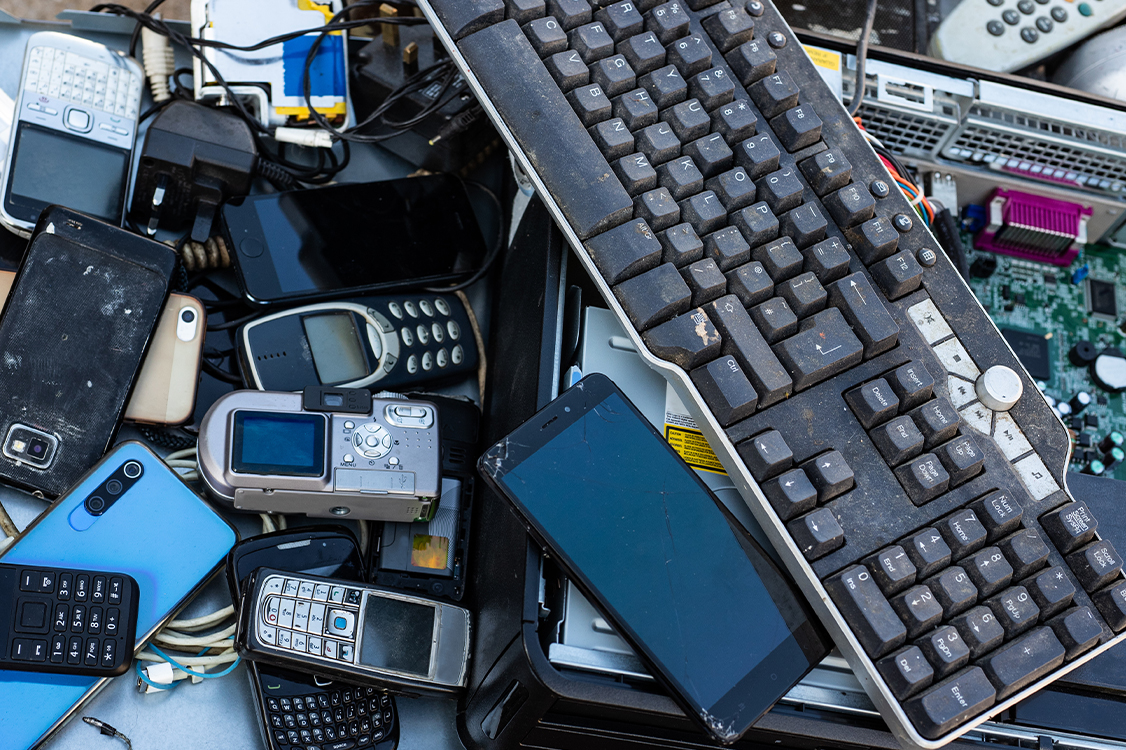What Gets Recycled in My Electronic Devices?
Cell phones, tablets, and laptops are integral parts of our lives yet have a finite lifespan. When they reach the end of their usefulness, it falls on each of us to consider their environmental impact and pave the way to a sustainable future. Recycling these devices is not only a responsible choice but also a crucial step towards reducing electronic waste. There are specific components to these gadgets that can be broken down, recycled, and repurposed for future devices.
The Anatomy of Electronic Devices
Before we dive into the recycling process and what it entails, let’s break down the key components of cell phones, tablets, and laptops.
Batteries: The heart of any mobile device, lithium-ion batteries are the most essential component to cell phones, tablets, and laptops. They contain valuable materials such as lithium, cobalt, and nickel.
Screens: A device’s display screen often contains glass and other materials that can be recycled. For example, there are three parts of a cell phone screen—the glass, LED, and digitizer—which can be replaced or reused.
Circuit Boards: Cell phones, tablets, and laptops house intricate circuitry on their boards, composed of metals that are both ferrous (containing iron) and non-ferrous (not containing iron) such as copper, gold, silver, steel, and aluminum. Tablets contain more extensive circuitry than cell phones, and laptops have the most complex circuit boards of them all.
Plastics: The outer casing of many cell phones, tablets, or laptops is typically made of plastic, which is recyclable.
Rare Earth Metals: Small quantities of rare earth metals are used in various components like device speakers, screens, magnets, phone or tablet vibration motors, and laptop hard drives.
Now that we understand what’s inside our electronic devices, let’s explore how these components are recycled and repurposed.
The Recycling Process for Electronic Devices
Recycling electronic devices involves a multi-step process designed to recover and reuse valuable materials while minimizing environmental impact. The typical steps are as follows:
Collection: Devices are first collected from various sources, including consumers, businesses, and electronics manufacturers. Recycling centers, as well as some electronic retailers, offer collection services.
Sorting and Dismantling: At recycling facilities, the devices are disassembled into their various components. This includes removing batteries, screens, circuit boards, and plastics. The components are sorted based on material type and can be diverted for reuse.
Shredding: Some devices may go through a shredding process to break them down into smaller pieces. This helps to further separate the materials.
Material Recovery: After dismantling and shredding, valuable materials such as metals (gold, silver, copper, and rare earth elements), glass, and plastics are recovered through various techniques. These materials are then prepared for reuse, and the high-quality outputs are turned into raw materials for manufacturing.
Safe Disposal: Components that can’t be recycled, such as hazardous materials, are disposed of in an environmentally responsible manner to prevent contamination.
How Recycling Repurposes—and Preserves—Our Resources
Recycling electronic devices not only conserves valuable resources but also reduces the environmental impact of electronic waste. The recycled materials from our old devices are repurposed for future devices and other applications.
Metals: The metals recovered from electronic devices, including gold, silver, copper, and rare earth elements, are used in the manufacturing of new electronic components. These materials are highly sought after in the electronics industry due to their superior conductivity and durability.
Plastics: Recycled plastic from old devices can be used in the production of new casings and components, reducing the demand for new plastic materials and, subsequently, the carbon footprint associated with plastic production.
Glass: The glass from old screens can be melted down and used to make new screens or glass components for other devices.
Batteries: The lithium-ion batteries from old devices can be reconditioned and reused in less demanding applications, such as backup power systems or energy storage solutions.
Rare Earth Elements: The recovery of rare earth elements, although relatively small in quantity, is crucial, as these elements are essential for various high-tech applications. They can be reintegrated into the production of new devices.
Circuit Boards: Recovered circuit boards may be refurbished and used in various electronics, or the metals within them can be extracted and recycled.
By reusing these materials, manufacturers can reduce the need for extracting and processing virgin resources, which conserves energy and reduces the environmental impact associated with mining and manufacturing. This not only makes economic sense but also contributes to a more sustainable and environmentally responsible electronics industry.
The Global Impact of Electronics Recycling
Recycling electronic devices has global significance. Electronic waste, or e-waste, is a growing concern due to the rapid pace of technological advancement and the increasing use of electronic devices worldwide. E-waste often contains hazardous materials that can harm both human health and the environment. Therefore, the responsible disposal and recycling of electronic devices is vital.
In addition to reducing the demand for raw materials, recycling lessens the carbon footprint associated with manufacturing new devices, as it consumes less energy and resources compared to creating new materials from scratch.
The Role of Consumers
As consumers, we play a crucial role in the electronics recycling process. There are several steps we should all take to contribute to a more sustainable electronic ecosystem:
Responsible Disposal: When you no longer need a device, don’t throw it in the trash. Instead, find a certified electronics recycling center or drop-off location.
Erase Personal Data: Before recycling your device, ensure that you’ve wiped all personal data from it or work with a recycler, like ARCOA, that is certified AAA by the National Association of Information Destruction (NAID). This helps protect your privacy.
Upcycling: Consider repurposing your old devices for other uses, such as converting a tablet into a digital photo frame or using an old laptop as a media server.
Support Eco-Friendly Manufacturers: When purchasing new devices, consider companies that prioritize eco-friendly and recyclable materials in their products.
Ready to Recycle? ARCOA Can Help
Understanding what gets recycled in our devices is a crucial step towards promoting responsible e-waste management. As consumers, we have the power to make eco-conscious choices, support recycling initiatives, and contribute to a more sustainable electronic ecosystem. In doing so, we can play a significant role in preserving our planet for future generations.
If you are ready to move toward greater sustainability and start recycling your company’s devices, contact us to get started today. Our team of experts can make the process simple, easy, and secure.
RELATED INSIGHTS

Safeguarding Your Business: The Importance of Secure Data Disposal
The rapid pace of technological advancement means that businesses and individuals are constantly upgrading their devices, leading to an...

ESG Responsibility Regarding e-Waste
In today's business environment, Environmental, Social, and Governance (ESG) objectives are critical. As companies strive to meet these goals,...
LET’S GET STARTED
Ready to put your retired IT assets to work for your business? Contact us to get the conversation started or request a quote. ARCOA has all the solutions you need to turn old IT assets into new revenue.
Talk to an Expert![$img['alt']](https://www.thinkarcoa.com/wp-content/uploads/2023/11/ARCOA_Blog_ElectronicDevices1023.jpg)